
Learning to distinguish the different forms of abuse and their characteristics
The number of cases involving victims of various forms of violence has increased significantly in recent years. Particularly about victims of sexual abuse, complaints are on the rise. This does not mean that abuse is a trend of the time; the truth is that victims are now receiving more support and finding more and more courage to talk about their experiences.
A celebrity, a friend of yours, may even you have been a victim of violence and abuse. The latter may be evident or occur more indirectly. It is essential to know the forms of violence out there to learn to recognize them to protect ourselves and those around us. The purpose of this article is to go beyond the recognition of your rights and to learn about self-respect, to highlight the relationship between boundaries and violation.
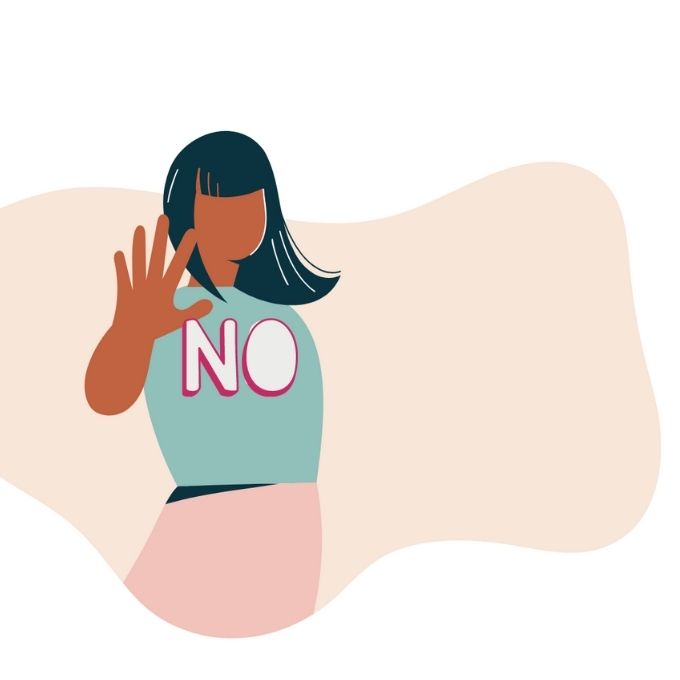
Summary of contents
- What is abusive behavior?
- What are the seven types of abuse?
- What are the reasons people stay in abusive relationships?
- What are the consequences of abuse?
- What can those who have been abused do?
- The importance of Trigger Warning
What is abusive behavior?
Abuse is the inappropriate treatment of an adult or child to achieve unjust or improper purposes. Abuse can coexist with neglect, which is defined as the inability to meet the basic physical and medical needs of an addicted person, emotional deprivation, and abandonment. Neglect is sometimes described as passive abuse.
What are the seven types of abuse?
1. Physical abuse
Physical abuse occurs when one person uses physical force against another. Physical abuse can start slowly and intermittently, such as owing an object or a slap, becoming more intense or worse over time. Therefore, this abuse usually causes bodily harm, the product of a single or repeated punishment, which can vary in size or intensity. Abusive relationships can move through a cycle of violence, which includes periods of tension and calm.
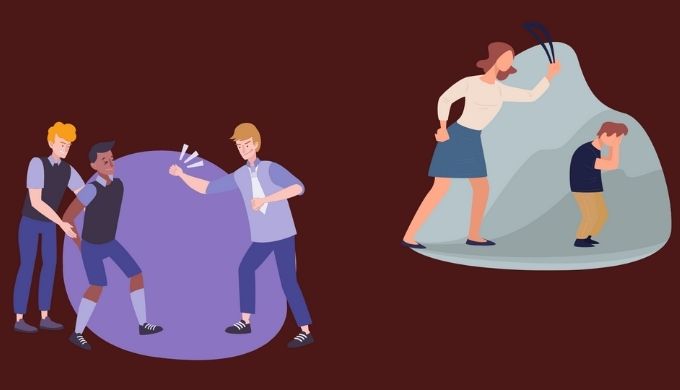
A person can experience physical abuse in many different ways. Physical abuse includes:
- pushing or shaking
- violently slaps, sharp grips, piercings including abrasions
- kicks
- spitting or biting
- pulling hair
- trying to strangle or drown
- using weapons
- driving dangerously
- destroying property and throwing things
- leaving the victim outside the house
- deprivation of sleep or even food
- forced diet
- physical restraint, e.g., wall or bed mounting
2. Verbal abuse
It occurs when someone uses written or spoken language to harm the victim. It is a crucial feature of emotionally abusive relationships. The perpetrator constantly makes statements that negatively characterize a person. This has serious implications for the self-esteem and self-confidence of the person experiencing verbal abuse.
Verbal violence is usually done with an angry voice and cold statements aimed at humiliating a person. Verbal abuse includes:
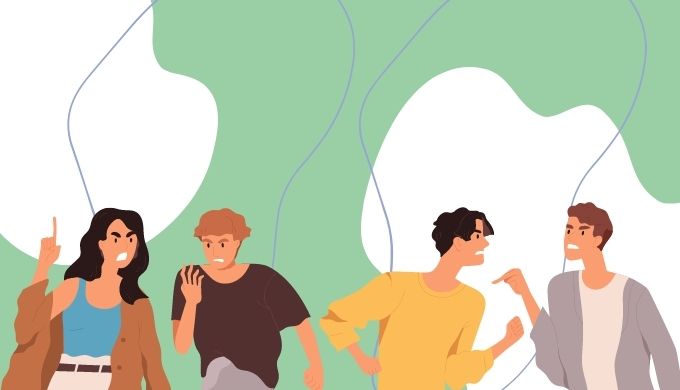
- offensive adjectives and first names
- constant criticism, swearing, and humiliation in a public or private environment
- attacks on the intelligence, body, or parental care of the individual
- screams and loud voices
- threats
- preventing the victim from speaking
3. Emotional abuse
A person can experience abuse and violence without being physically injured. Emotional abuse does not leave physical scars but can significantly impact a person's mental health and well-being. People who experience emotional abuse can feel anxious, depressed, and even suicidal.

Perpetrators of emotional abuse use it to take away a person's independence, confidence, and self-esteem. This helps the perpetrator maintain power and control in the relationship. Physically abusive relationships often involve aspects of emotional abuse.
Because emotional abuse is non-physical, the signs of emotional abuse are difficult to detect. Emotional abuse includes:
- blaming someone for all the problems of a relationship
- constantly comparing the person with others to undermine the self-esteem and value of the person
- there is usually a bad mood and whining
- deliberate embarrassing exposure in a world
- disparaging names
- shout, insult or swear at every opportunity
- creating financial dependence
- imposing the costume point of view
- preventing from meeting friends or even family members
- persecution
- suicide threats
- making people feel guilty when they refuse sex
- threatening any immigration conditions
- cyber humiliation and intimidation
4. Psychological abuse
Psychological violence is difficult to identify, as it involves a spectrum of abuse that does not provide physical evidence. Its essence is to cause mental trauma through actions, threats, or coercive tactics.
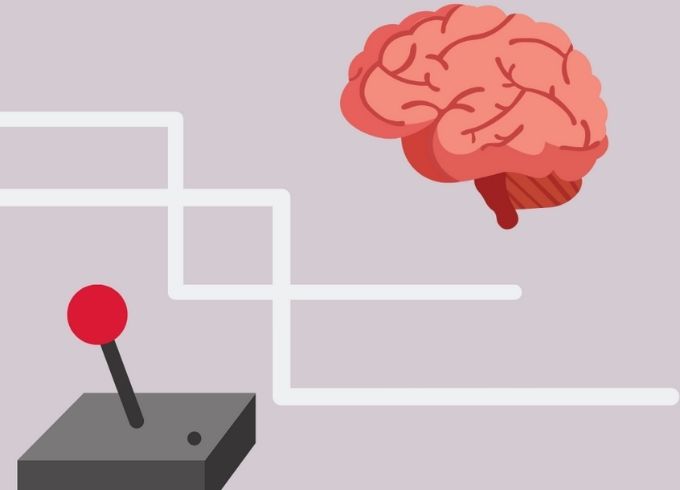
This is when someone uses threats and fear to gain control. Mental or emotional abuse is when a partner uses mind games to control their loved one. Psychological abuse can be included as an element of emotional or verbal abuse. Many people experience this type of violence in restrictions, devaluations, unrealistic demands, or threats. It may also involve withdrawing information or love to bring out specific behavior of the victim of abuse.
Psychological violence can occur before physical or sexual violence. Also, persecution and surveillance are violent forms that make the victim feel intense fear.
Many signs that this type of abuse occurs are similar to those of emotional violence:
- play with someone's feelings
- ignoring or minimizing the victim's feelings
- make the victim feel vulnerable and dependent
- make the victim feel bad about themselves
- relegation
- causing unjustified fear
- persecution
- isolation or refusal to let the person go anywhere
- showing extreme jealousy
- the abuser controls the finances and money you spend
- constantly highlights your flaws
- accuses you of things you never did
- uses the silent reaction as punishment
- controls who you see or where you go
- makes jokes that hurt you
5. Sexual abuse
Sexual violence involves complete sexual intercourse or attempted sexual intercourse without consent and acts of a sexual nature that do not include intercourse (such as voyeurism or sexual harassment). This consists of the trafficking of human beings for sexual purposes against someone who can not consent or refuse. Sexual abuse affects the physical and emotional health of people.
Specifically, it is divided into three categories:
- The use of physical force to force a person into sexual activities against their will.
- Attempting or completing sexual intercourse with a person who cannot understand the act, refuses to participate or refuse to participate in the sexual activity because they are ill, has a disability, is addicted to alcohol or substances, or are bullied or bullied.
- The abusive sexual intercourse. Threats of physical or sexual violence with physical force or a weapon can cause death, disability, bodily harm

Τhe specific forms in which it manifests itself are the following:
- rape
- deliberately causing pain during sex
- attack on the genitals
- forced sex without protection against pregnancy or sexually transmitted diseases
- forcing the partner to perform sexual acts using sexually degrading insults
- unwanted contact
- unwanted exposure to pornography
- sexual jokes
- withholding sex as punishment
- using sex to force compliance
6. Financial abuse

Financial abuse can be subtle, with one person gradually gaining control of bank accounts and financial transactions. Financial abuse can also be apparent, violent, and threatening. This type of violence occurs when someone controls someone's financial resources without their consent or misuses those resources. For example, a man may forbid a woman from working or spending her wages. It is about power and control.
In the context of relationship violence, economic abuse includes:
- complete control of finances and money
- restricting access to bank accounts
- providing an inadequate allowance and monitoring all financial activities
- prohibiting work
- seizing all income and not allowing access to it
- preventing access to work, e.g., taking the keys or the car
- theft of credentials preventing movement
- using the credit card without the permission of the holder
- refusal to work or contribution to common costs
7. Digital abuse/Cyberbullying
Digital abuse is when someone shares or threatens to share personal photos without consent to the image. The perpetrator interferes in the victim's data and risks to leak private material. This behavior is often a form of verbal or emotional violence that takes place on the internet. In addition, this category of violence also includes the fact that the perpetrator gains access without consent to your social media profile and pretends that you are uploading and sending unwanted things.
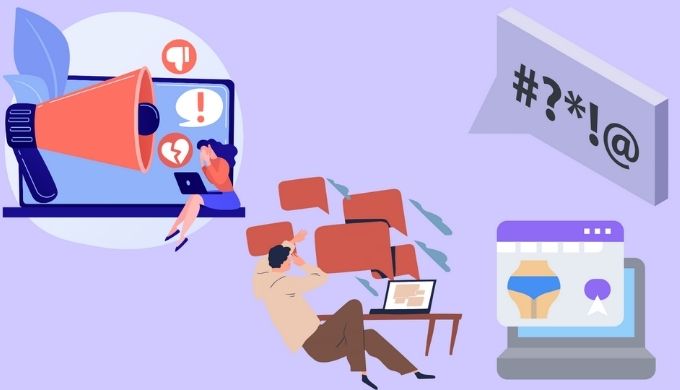
The perpetrator uploads content online that contains:
- a naked face
- a person whose breasts or genitals are visible
- a person who has sexual intercourse
- ''upskirting'' and ''downblouse'': photos under the skirt or from the top of the blouse
- a person's face was digitally added to a pornographic or sexual image
What are the reasons people stay in abusive relationships?
It is not always easy for the victims of an abusive relationship to escape so simply. There are various reasons they remain in this:
They are under threat: in this case, it is more a matter of surviving and avoiding taking the risk for a bad ending. The victim is threatened that if they move away from the abuser, the abuser will talk to others about what is happening or that the abuser will hurt them or their loved ones.
Love feelings: The victim often clings to their perpetrator because they have feelings for them and feel love for their bad partner. They may have children with them and want to support their family. Abusers can often be charming, especially at the beginning of a relationship, and the victim can hope that the person in love will return. They believe that the violence will stop at some point because they don't want the relationship to end.
Believing that this is the norm: A person may be so blinded by the perpetrator's behavior that they do not realize their relationship is unhealthy. They may not have an example of a healthy relationship to be able to make the comparison
Embarrassment or shame: Most of the time, the perpetrators are imbued with the idea that their abuse is something hidden and a shame for the same event. So there is a shame about a possible revelation. In the same category also belong those who are abused through the threat of revealing a ''shameful'' fact, for example, the perpetrator showing details/secrets of the victim's personal life.

Feeling guilty: It is often difficult for someone to admit to being abused. They may feel that it is their fault that they believed in something and got trapped so easily. They may also be worried that their friends and family will judge them.
Lack of money: The victim might be financially dependent on the abusive partner. Without money, access to resources, or even a place to go, it may seem impossible to leave the relationship. This feeling of helplessness can be powerful if someone lives with an abusive partner.
Disability: When one is physically weak and needs help, one may feel that one's well-being is linked to the abusive relationship. The person believes that there will be no other person to take care of them, so they endure the abuse even if it is nightmarish. Of course, here are the cases where a person with a mental disability does not have the mental capacity to perceive the abuse when another abuser decides for them without their consent.
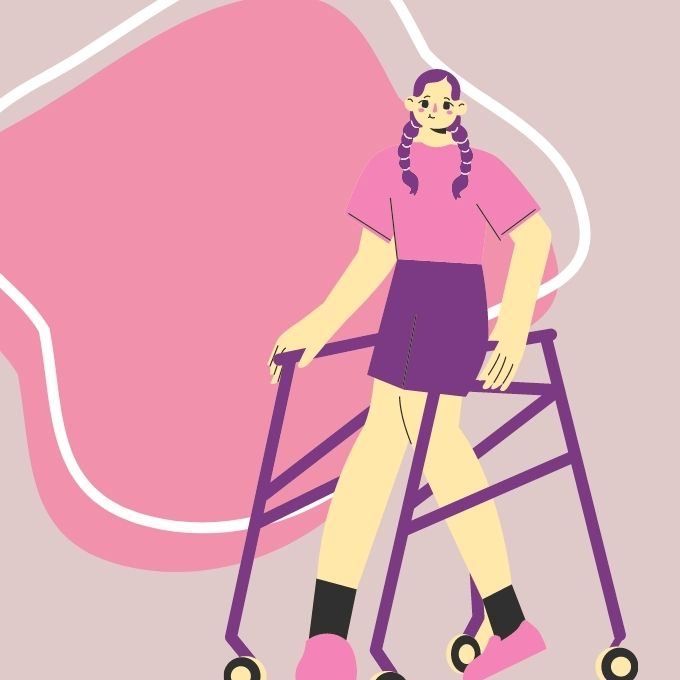
Cultural/religious reasons: In social norms where cultural or religious commitments are overwhelming, they can significantly influence one's decision to remain in an abusive relationship instead of leaving. Usually out of fear of offending their family.
Language barriers/immigration status: If a person is in immigration status, they may fear reporting abuse will affect their stay. Also, if their first language is not the speakable one according to their country, it can be difficult to express their situation's depth to others.
What are the consequences of abuse?
The effects of abuse can be temporary but permanent, such as taking important to very serious dimensions.
Physically the victims can be filled with scars (bruises, scratches, tears), obstruct our normal function (difficulty walking, e.g., if our feet are hit or complications in an organ), or lead to damage that will require hospitalization, surgery, and rehabilitation of the injured.
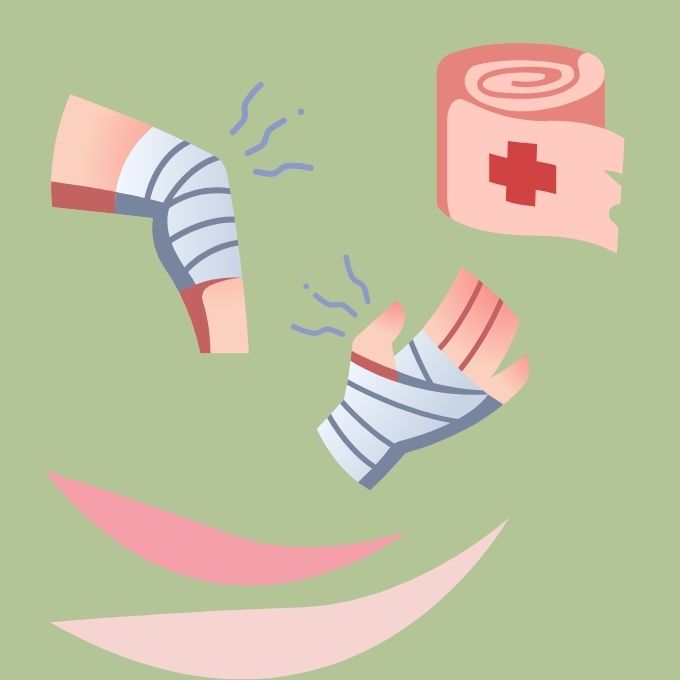
Exposure to abuse from an early age can also affect brain development while injuring other parts of the nervous system, such as the endocrine system, circulatory system, musculoskeletal system, reproductive system, respiratory system, and immune system, with long-term consequences. Violence against children from birth to the first years of development can negatively affect mental development, resulting in educational and professional backwardness.
Chronic emotional distress eventually manifests itself with characteristic symptoms such as fatigue, insomnia, headaches, muscle and joint pain, digestive problems, and recurrent infections due to a weakened immune system.
Mentally, when a person experiences high levels of anxiety, stress, and constant pain, memory-related brain structures, such as the hippocampus, usually shrink in volume and connectivity. The person makes mistakes in memory, can not concentrate, and can not make decisions with a clear mind.
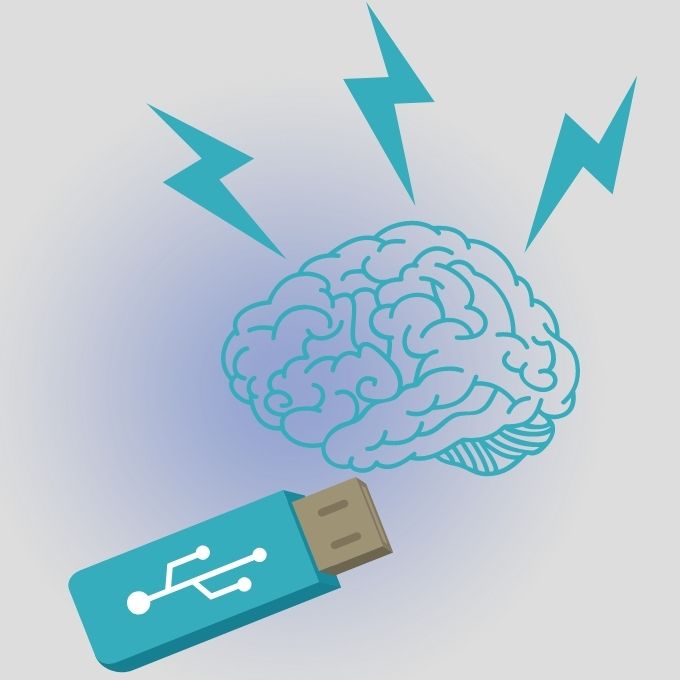
On the other hand, the feeling that the facts are not common. It is a mechanism by which the mind distances itself from reality to depersonalize it so that the person thinks, "this is not happening to me." Usually, the victim experiences a whole kaleidoscope of senses and emotions. They feel they have no control over their life.
When the victims tell themselves that there is no way out, they may start having suicidal thoughts. All this guilt and low self-esteem lead them to think that he is not worth it. Initially, these are vague ideas, a transient desire. In addition, there is a high probability that the victim will develop depression, and some anxiety disorders with post-traumatic stress disorder will be the most common in these cases.
Abuse also has severe consequences for an interpersonal/social level. The individual cannot develop relationships, either because he is not allowed to or fears a possible similar development and remains isolated from society. They do not have social rights, and for practical reasons, they can not have an everyday life, work, have friends, participate in the community.
What can those who have been abused do?
The first and most important thing is not to be afraid to talk. Of course, it isn't straightforward, and the time must come when you will feel comfortable about it: but it is essential to do it because first, you get it out of you. The weight that has fallen on you for so long, you manage to throw it away and get one step closer to liberation from such behaviors.

Second, you gain the support of the world. Where you think you are alone, you realize that many people understand what you are going through and want to be there. These people can be both people who know you and strangers aware of your story. This world can help you emotionally by confirming your feelings and offering you a hug and more practical, e.g., financial support for court costs, etc.
A third positive effect of talking about your abuse is that you inspire people who have been equally abused to talk about their drama. It gives the feeling that you belong to the same category! There is the identification, and the hope grows that together you can create a network of solidarity and mutual support.
Psychotherapy is also a necessary solution for people who have been abused. They must receive professional help and adapt to their drama. Through counseling and psychotherapeutic services, the victim is encouraged and empowered to continue their life normally, overcoming their traumas.
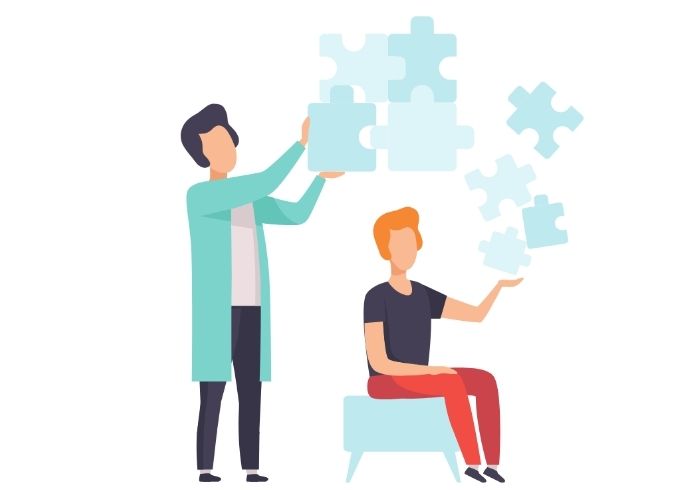
It is essential to implement a legal framework related to changing social conditions at the societal level. In terms of social situations, it is necessary to change the values and rules of society as a whole (e.g., change the mentality that tolerates or ignores the sexual abuse of girls or the aggressive behavior between boys).
Education also plays a vital role in this. A supportive and empowering environment must be provided at school. There will be preventive measures (integration of courses that offer knowledge on the subject) and subsequent treatment (e.g., school psychologists, actions to empower victims, etc.).
The importance of Trigger Warning (TW)

A trigger warning is a statement made before sharing potentially disturbing content. You will find it mostly on social media, where posts of abuse and reposts are made.
The two essential elements of this situation are a need to spread the news and inform the world about the perpetrators and the whole scene.
On the other hand, readers (and most probably, those who have experienced the particular trauma) mustn't be disturbed by images and news with which they identify or feel so mentally disturbed.
By placing the acronym TW in bold at the beginning before the story's description, you are covered that you informed, and you give someone the freedom not to continue reading if they feel that they can not stand the content. It can now be considered a trend and commented negatively by some. However, its importance is evident, and its existence is much more preferable than its absence.
Get to know us more!
If you would like to get involved in this initiative and be a part of history in the making, feel free to shoot us an email at contact@buddyhelp.org or browse our website to discover all of the many ways you can join our BuddyHelp family and make a difference in the world.
